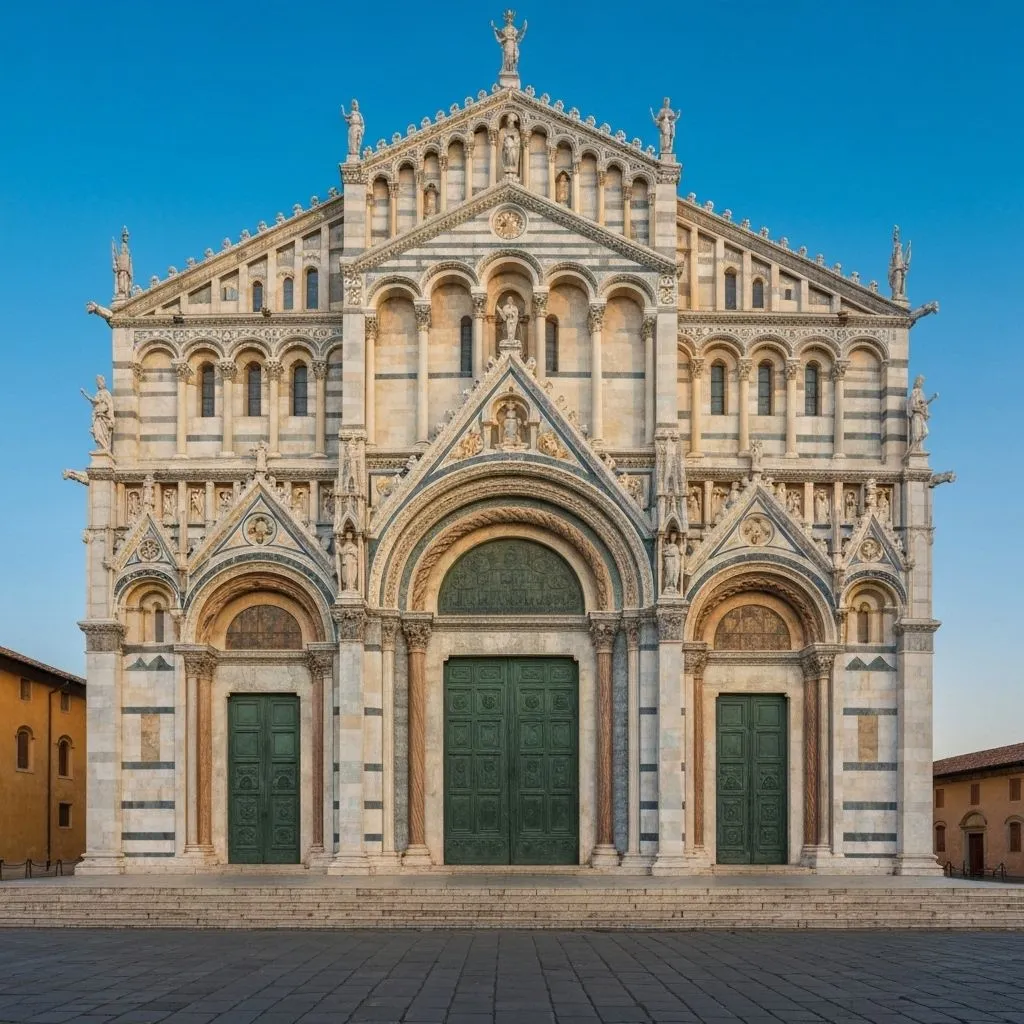Pisa Duomo – Architectural Marvel of Tuscany
Explore the Duomo of Pisa, a Romanesque cathedral famed for its grand marble facade, intricate interior, and historical significance in the Piazza dei Miracoli.

The Duomo of Pisa: Cathedral of Splendor and History
Standing proudly at the heart of Pisa's Piazza dei Miracoli, the Duomo (Cathedral) epitomizes Romanesque elegance and Tuscan artistic mastery.

Historical Context
- Foundation: Begun in 1063 under architect Buscheto, the cathedral reflects Pisa’s maritime wealth and cultural ambition.
- Consecration: Completed and consecrated in 1118, it symbolized Pisa’s rise as a Mediterranean power.
- Material Choice: Local Carrara marble dominates, offering a striking white and grey facade.
Architectural Features
- Facade: Three tiers of arcades and ornate columns showcase a delicate interplay of light and shadow.
- Interior: A basilica plan with nave and aisles is enriched by gilded ceilings, painted panels, and marble intarsia.
- Bronze Doors and Mosaics: Each doorway and mosaic tells stories from the Old and New Testament, a visual Bible in stone.

Artistic Highlights
- Pulpit by Giovanni Pisano: Carved in exquisite detail, it narrates biblical events with dynamic figures and expressive gestures.
- Choir and Frescoes: Elaborate fresco cycles adorn the apse, illustrating the medieval devotion to sacred art.
- Marble Floors: Intricate geometric patterns demonstrate technical mastery and aesthetic sophistication.
Visitor Experience
- Location: Central to the Piazza dei Miracoli, easily accessible alongside the Baptistery and Leaning Tower.
- Audio Guide: Helps illuminate the rich history of its art and architecture.
- Photography: Early morning light enhances the subtle textures of Carrara marble on the facade.

The Duomo of Pisa remains a monumental achievement of medieval Europe, blending architectural innovation, sculptural brilliance, and spiritual devotion into a single, awe-inspiring structure.
About the Author

Dr. Luca Bianchi, Historian
Passionate about history and travel, I created this site to help fellow travelers make the most of their visit to the Leaning Tower of Pisa. With years of experience exploring landmarks worldwide, I share practical tips and insights to enhance your journey.
Tags
Comments (0)
Loading comments...